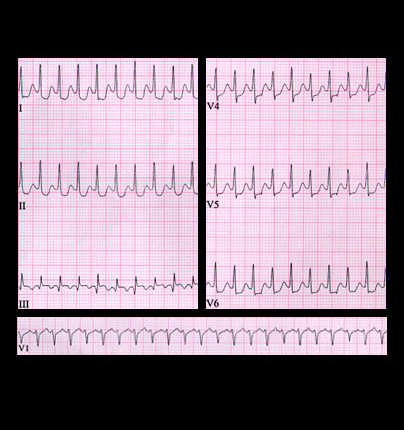
One additional noteworthy feature of the tracing recorded during the tachycardia, shown again here, is the presence of QRS alternans, i.e. the alternating magnitude of the QRS complex. This is best appreciated in leads V4, V5 and V6 but is also present, albeit less obvious, in the other leads. Such alternans during a narrow QRS complex tachycardia is highly suggestive of AV re-entry employing a bypass tract for the retrograde limb of the re-entry circuit.
Supraventricular tachycardia is just one setting in which QRS alternans occurs. In patients with a pericardial effusion, the presence of QRS alternans is an important finding because it is highly suggestive of cardiac tamponade.
